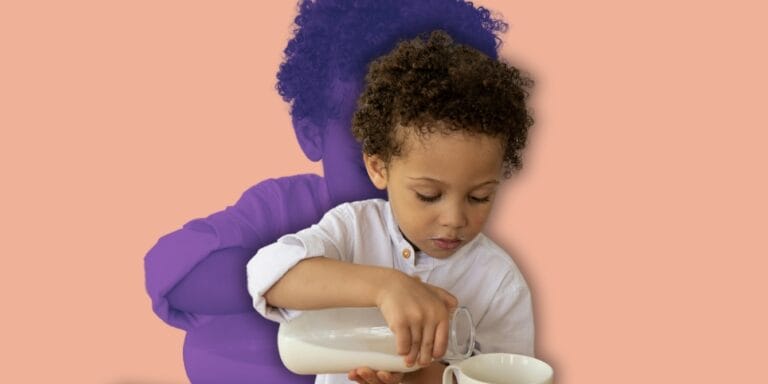It’s Science: Why your kids are obsessed with those unboxing videos on Youtube

What is it about these clips that make them so mesmerizing for kids?
Table of Contents
It’s a parenting conundrum for a digital age: Your child has real, physical toys they could play with, but they would rather watch a YouTuber, like super famous 6-year-old Ryan, or the disembodied hands of the adult known as “Disney Collector” (who has made millions doing it) unpack new toys. The kids don’t necessarily even want the products featured in the video, they just want to watch the video.
So what is it about these clips that make them so mesmerizing for kids? Because technology is moving faster than research does, we don’t know exactly what goes on in a child’s brain when they watch these videos, but we do know they’re kind of addictive.
They activate motivation and desire
According to experts, the videos are relatable and tap into the excitement a child would feel if they really were unwrapping a present themselves, but watching someone else unwrap a present also activates areas of the brain involved with motivation and mirroring, through something psychologists call “mimetic desire.”
“It’s the idea that desires don’t just depend on the properties of the object, but also on whether the object is seen as attractive to others,” child psychologist and neuroscientist Charlotte Keating told Australia’s ABC News.
That, combined with a very young child’s natural tendency to get intensely obsessed about one thing (in this case, so-called “surprise egg” videos), and an algorithm designed to serve up more and more of the same has created a phenomenon that isn’t great for parents who are struggling to set limits on screen time.
They give kids control and trigger reward responses
Part of what makes online video (and handheld screen media in general) so appealing to kids is how easy it is for them to control it. Even a very young child can select an appealing unboxing video from a YouTube menu. Plus, they like the interactivity.
In an interview with Scientific American, pediatrician Dimitri Christakis of the Seattle Children’s Research Institute explained how clicking on a smartphone or tablet triggers reward pathways in the brain. “The delight a child gets from touching a screen and making something happen is both edifying and potentially addictive,” he explains.
When the manicured hands of Disney Collector unwrap the next toy, a kid’s brain thinks, “Yay! I made her do that.”
Little kids crave them but can’t understand them
“Some people call it ‘toddler crack’,” says Professor Stuart Cunningham, co-author of the recently published research paper Toy unboxing: Living in an unregulated) material world.
Cunningham cautions against “moral panic” over unboxing videos, noting that making such videos can be empowering for child YouTubers and their families, but critics argue the videos are hardly empowering for the kids (some just toddlers) on the receiving end.
“Children [are] deceived into thinking this is content, a kid playing with a toy, when it’s a kid selling them a toy,” Aaron Mackey, a Georgetown Law professor told AdWeek.
The Campaign for a Commercial-Free Childhood and the Center for Digital Democracy are among those who worry unboxing videos are basically long-form commercials with lower production values, and not at all the kind of “high quality programming” (think Sesame Street) the American Academy of Pediatrics recommends.
They raised the issue to the FTC, along with complaints about other weird YouTube content aimed at kids.
Unboxing videos can be an opportunity to teach media literacy skills to older kids (“Why do you think this YouTuber is making this video? Do you think the toy company maybe paid them to?”) but many of the videos are being consumed by toddlers who can barely grasp the tablet they’re looking at, let alone the concepts of sponsored content.
Kids may bond with unboxers
A playlist of surprise egg videos may be an effective way to keep a toddler quiet during a wait or car ride, but the AAP recommends no screen time beyond Facetime or Skype calls for kids under 18 months, and very limited screen media after that.
As some parents on social media have noted, an early obsession with unboxing videos might change the way kids interact with real people in video chats.
“My two year old was Skyping with my mom and she kept saying ‘egg’ over and over. It took me a minute to realize she thought my mom was going to open surprise eggs like on YouTube,” wrote one Reddit user. “It’s sad that she thinks ‘Disney Collector’ is a family member,” says another.
According to Pamela Rutledge, director of the Media Psychology Research Center, a nonprofit based in Newport Beach, California, kids may start to feel like they know their favorite YouTube unboxer.
In an interview with Nova Next Rutledge explained why a child might feel like they have a relationship with an unboxing personality. “We see the action. So it isn’t as separate from face-to-face communication as our brains process it, as we might rationally or consciously think,” says Rutledge, who notes that it’s similar to how adults may feel about a celebrity like Oprah. “You start to develop a one-sided relationship with that person where you feel like you really know that person.”
Alternatives to encourage real play
A lot of kids get unhealthily obsessed with unboxing and unboxing stars, but some parents do report positive associations with the videos and credit the genre with the speech and language gains their children have experienced.
Experts caution time with a screen can take away from important developmental activities, though. Research has shown that preschool-aged children need to interact with actual physical objects in order to develop their parietal cortex, so real play is a better brain builder than unwrapping videos.
For older kids, making or pretending to make their own unwrapping videos is a creative alternative to passively consuming them (even if the performance is not actually posted to YouTube).


































